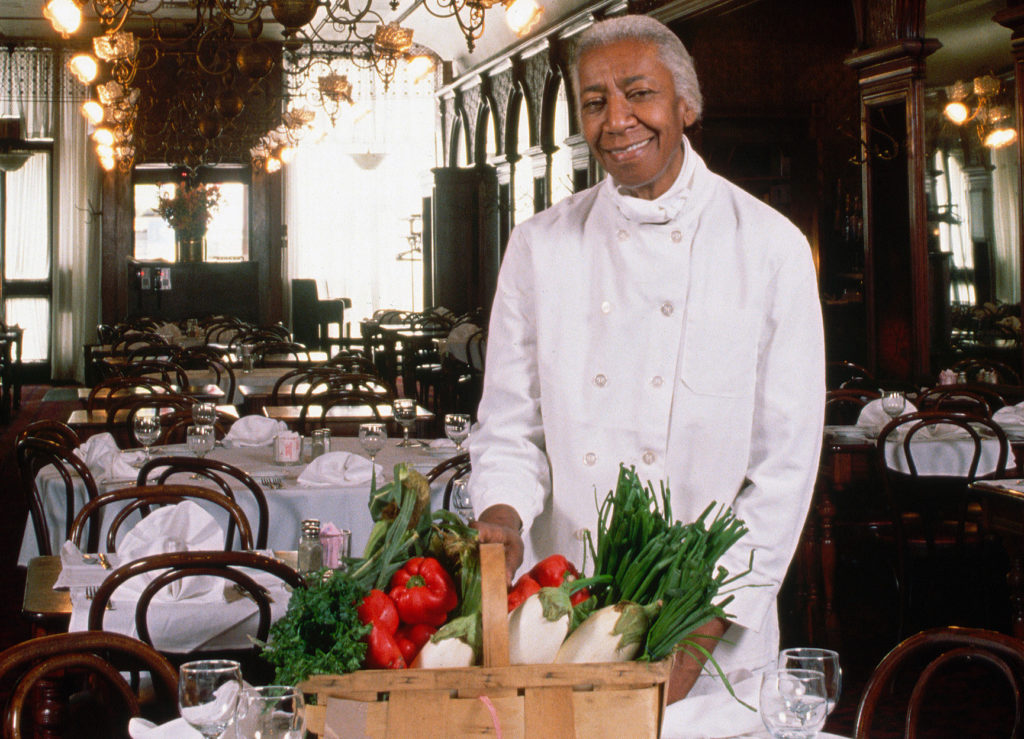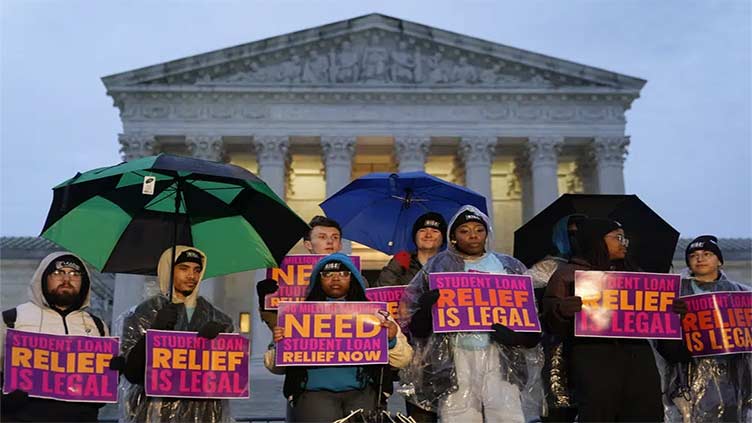ORANGE, Va. – The primary time Denise Thompson heard about Edna Lewis, the Black American chef who helped illuminate Southern delicacies, it was from an everyday buyer at her restaurant, Coopers Cookin’ and Catering. “Your meals jogs my memory a lot of her,” the shopper informed Thompson. “Are you certain you’re not associated to her?” “I don’t even know this girl,” Thompson recalled pondering. Lewis, a revered determine in culinary circles who was born and raised close by, remains to be not a family title, regardless of many years of contributions to the meals world. But when the shopper returned to Coopers with some literature, a U.S. postage stamp with Lewis’ likeness and two of her cookbooks, Thompson acknowledged one thing very acquainted. Thompson (née Cooper) and her cousin, Phillip Cooper, had began their restaurant in 2020 as a tribute to their household, particularly her mom, Mildred Cooper. Mildred raised 15 of her personal youngsters and quite a few others, whereas additionally working a small aspect enterprise promoting meals to rail and manufacturing unit staff. “I learn up on [Lewis] and checked out her cookbooks and simply a few of the recipes,” Thompson mentioned. “, my mother used to do it the identical method.” Quickly after that discovery, Thompson was approached by her native financial board. They have been planning an Edna Lewis menu path at eating places close by in honor of the fiftieth anniversary of her first cookbook, working from Thanksgiving 2022 to Memorial Day. Thompson leapt on the likelihood so as to add Lewis’ dishes to her menu – curried hen, apple pie and quiche Lorraine. Gadgets that may be true to Coopers, her mom and Lewis. “I believe the recipes, it’s simply, as I might say, so real.” * * * Wild pheasant, roast quail or the hen curry that Thompson is dishing up (with rice and a roll on the aspect) isn’t what many image after they consider Black American delicacies. It’s not a fluke that in a 2017 episode of the truth cooking present “High Chef,” one of many challenges was to prepare dinner a dish impressed by Edna Lewis – and several other of the cooks didn’t know who she was. But her contributions are simple. Over the course of her profession, Lewis each preserved the traditions of regional Southern cooking and reshaped the best way individuals considered it. Her genre-defining cookbook celebrated heritage but in addition risk. “I consider Lewis because the single-most essential determine in American regional delicacies, each as an historian, however clearly additionally as a author,” mentioned Sara Franklin, a meals scholar whose first e-book was a set of essays concerning the chef and creator.
Left to proper: Phillip Cooper’s restaurant helps deliver Edna Lewis’ dishes to life as a part of a menu path. Kenichi Serino/ PBS NewsHour
Whereas the menu path commemorates “The Edna Lewis Cookbook,” it was “Style of Nation Cooking,” her landmark 1975 e-book, that made Lewis well-known. Half historical past, half recipes, it describes Lewis’ childhood, the lives of the individuals in her group, their ties to the land and one another, in addition to how completely different meals grew to become obtainable and have been ready because the seasons modified. “I believe she, not like many cookbook writers of her period, actually branched these classes of historical past; of writing as a lyrical literary kind; and meals. And he or she was actually one of many first to place all three right into a e-book collectively,” Franklin mentioned. The innovation of “Style of Nation Cooking” didn’t finish there. Not like different cookbooks that categorized their recipes by components or course, Lewis organized hers chronologically, connecting to the altering seasons and the cycle of life. She celebrated meals that got here straight from the terroir of Central Virginia into the kitchen and onto plates. There’s an inclination to conflate Black American meals with soul meals, which reveals a much bigger misunderstanding about meals from the South, mentioned Ashanté Reese, assistant professor of African and African Diaspora Research on the College of Texas at Austin. “I believe all of the occasions when individuals discuss African American delicacies, they’re actually fascinated with soul meals. They consider the issues that individuals see on TV are literally what many people expertise, just like the collard greens, fried hen, mac and cheese, cornbread,” Reese mentioned. “I believe that’s positively part of African American delicacies. However I believe what that does is, it type of constrains the creativeness and limits us to pondering that Black meals equals soul meals, which isn’t essentially the one culinary custom,” Reese mentioned. * * * Lewis was formed by her agrarian upbringing, in addition to the cosmopolitan and political life she cast for herself. Born in 1916 in Freetown, Virginia, she moved to New York Metropolis as a teen. She labored as a seamstress, as soon as making a costume for Marilyn Monroe, and a typesetter for the Every day Employee, a communist newspaper. She and her husband, Steve Kingston, by no means missed the night information, Franklin mentioned, and she or he later served as a docent on the American Historical past Museum. Lewis grew to become co-owner and chef of the bohemian Cafe Nicholson, and ran a catering enterprise thatprepared meals for New York’s well-to-do — together with Marlon Brando, playwright Tennessee Williams and Eleanor Roosevelt — earlier than she determined to attempt her hand at a cookbook. Based on Franklin, Lewis’ correspondence together with her editor, Judith Jones – who additionally championed Julia Little one’s “Mastering the Artwork of French Cooking” – exhibits a acutely aware effort to set down on paper the lifetime of Black, impartial communities that had been uncared for by historical past and whose residing reminiscence was in peril of disappearing. WATCH: A feast of African-American culinary contributions, baked into the South’s DNA “She goes again to Virginia and she or he goes to the historic societies for the primary time in her life,” Franklin mentioned. “She sees not solely what sort of data are there, however what’s lacking, which has an enormous quantity to do with the type of urgency that she feels about telling that story that, on the time, had not been informed.” Freetown, Lewis writes within the introduction of “Style,” “wasn’t actually a city.” “The title was adopted as a result of the primary residents had all been free of chattel slavery and so they needed to be often called a city of Free Individuals,” she wrote. Granted to Lewis’ grandfather by a plantation proprietor, the land is about 10 miles outdoors the city of Orange within the Piedmont area of Virginia, not removed from Montpelier and Monticello, the slaveholding residences of Presidents James Madison and Thomas Jefferson respectively. On an early spring morning, Bruce Monroe is studying previous wills at a protracted desk lined in an ivory fabric, the bookshelves behind him crammed with previous data on the Orange County Historic Society. His group, the Orange County African American Historic Society, of which he’s president, doesn’t but have its personal workplace. There are few data detailing the lives of enslaved Black People, Monroe notes. Wills left by white slaveholders are generally the one proof of family tree. Monroe himself grew up in one other close by city settled by freed enslaved individuals. Not not like like Lewis’ household, his dad and mom and their seven youngsters farmed and managed to feed themselves by elevating crops and livestock on just one acre. “We raised animals, chickens. We had a backyard, fruit bushes, we grew herbs. , it was many of the main meals that we ate was produce,” Monroe mentioned. How was all this harvest potential? “Seven children,” he merely solutions. In her e-book, Lewis focuses on the self-sufficiency of the group and the mutual assist residents supplied one another, leaving an impression that, whereas there could not have been wealth in Freetown, there was additionally an absence of need. She hardly ever mentions, say, the promoting of farm items.
Left to proper: Certainly one of Lewis’ previously enslaved ancestors helped discovered Freetown, close to Orange, Virginia. Kenichi Serino/ PBS NewsHour
The reality was extra sophisticated, Franklin says. “They tried self-sufficiency, however they by no means achieved it. Virtually all the Black ladies in Freetown went and labored in white households as domestics,” Franklin mentioned, one thing Monroe recollects from his personal childhood rising up close to Orange. This actuality – Black home staff making ready meals to the style and magnificence dictated by their white employers – additionally knowledgeable the Black delicacies of the area, together with what Lewis and her household cooked and ate. “She’s writing from many years of distance. And Freetown as a spot has ceased to exist.” Within the case of the ladies of Freetown, that meant “studying, cooking underneath a deeply French-influenced custom that was extremely, extremely particular to Orange County within the Piedmont area of Virginia,” Franklin mentioned. Monroe nonetheless farms within the county, although lots of his siblings have moved away. As did lots of the residents of Freetown and different descendants of enslaved individuals who joined the Nice Migration, looking for better financial and academic alternative outdoors the South as a part of one of many largest actions of individuals within the historical past of america. The motion was not solely from the South to different elements of the nation, it was additionally largely from rural areas to cities. With them they introduced their tradition, together with their meals. * * * “Style of Nation Cooking” is written as a type of diary, with storytelling and recipes unspooling from an early spring dinner of mutton, to be eaten after a protracted winter with the primary wild asparagus harvested from alongside their fence. It ends in winter, with popcorn made on a charcoal fireplace and eaten with butter or sugar, or strung collectively and coloured as ornament for a Christmas tree. The e-book is an “elegy” to Freetown, Franklin mentioned. Likewise, the Lewis who was writing within the ‘70s isn’t the little woman she depicts herself as within the e-book – her perspective had additionally modified. “She’s writing from many years of distance. And Freetown as a spot has ceased to exist. Geographically, it’s nonetheless there, however the group is totally disconnected, together with all of her siblings,” she mentioned. A kitchen at Monticello property. Photograph by Edwin Remsburg/ VW Pics through Getty Photographs The primary classically skilled chef in America When Thomas Jefferson traveled to France in 1784 to function the brand new United States ambassador, he introduced alongside an enslaved man, James Hemings. He’s right this moment much less well-known than his sister, Sally, who was additionally enslaved by Jefferson and bore a number of of the previous president’s youngsters into slavery. On their arrival, Jefferson organized to have Hemings skilled as a French prepare dinner, together with within the artwork of patisserie, and later, made him the pinnacle chef at his residence, the American embassy in Paris. It was there that Hemings, a free man on French soil, earned the primary wages of his life — although solely half of what Jefferson had paid the earlier, white head chef. Hemings continued to labor for Jefferson after they returned to the U.S.; he was granted his freedom in 1793. In her e-book, “The Hemingses of Monticello,” historian Annette Gordon-Reed theorizes that this association started to kind whereas they have been nonetheless in France. The doc granting his freedom additionally had a selected requirement: Hemings must practice a brand new prepare dinner in French method. The teachings and expertise Hemings introduced residence and honed have been handed on to generations of Black cooks working in white kitchens. A dish much like macaroni and cheese was first made in Europe; Hemings is the chef who almost definitely launched the dish to the U.S. “All these items that we type of simply contemplate to be Southern meals we’d not have had it if it wasn’t for James Hemings,” mentioned Zach Andrews, head chef of the Spoon & Spindle. What else influenced her? On the time, america was making ready to have a good time its bicentennial, famous Franklin, and “fascinated with how we glance again over 200 years and what hasn’t been reckoned with.” Black arts and tradition within the ‘60s and ‘70s additionally performed a job. Outdoors of cooking, Lewis was identified for the Africa-inspired print clothes she tailor-made for herself. “She’s writing in dialog with different artists and thinkers who’re speaking about Black tradition in earnest, in live performance,” Franklin mentioned. WATCH: Photographs of ‘Black life, Black pleasure,’ are immortalized in historic Charlottesville portraits She argues that “Style of Nation Cooking” can be learn as an anti-capitalist e-book, that the land the individuals of Freetown lived on was not simply theirs to take advantage of but in addition take care of in order that it could possibly be given to future generations. “I believe that’s one other mode of resistance to the capitalist financial system, to the white capitalist financial system, to manufacturing of aggregations and accumulations of wealth,” Franklin mentioned. “But in addition she’s type of displaying off her communist stripes a little bit bit there. Actually her socialism. Her sense that individuals are supposed to deal with each other and deal with the land and so they can’t simply type of run roughshod throughout it.” After which in fact there may be the switch of expertise and data repeated between Black cooks on numerous plantations and in white kitchens for a whole bunch of years and even after the top of slavery – a legacy Franklin mentioned has been uncared for by historical past. This affect goes past the abilities that originated with James Hemings, French-trained prepare dinner of Thomas Jefferson, and contains diversifications honed by different Black cooks, together with Lewis. “To counsel that it’s only a straight French affect means that Black people discovered it after which they didn’t do something with it, that it was static or stagnant, that they simply have been repeating what was taught to them,” Franklin mentioned. “I exploit ‘residence cooking’ as a result of that’s what I really feel that we have now right here, like Southern, residence cooking.” Lewis was utilizing French method however adjusting and making use of them to native components, together with the wild crops and animals discovered within the forests and fields of the Piedmont. Thompson believes that soul meals is Black meals “but it surely goes past it.” She doesn’t essentially contemplate the meals she grew up with and now serves to be soul meals. “I don’t use that too usually. I exploit ‘residence cooking’ as a result of that’s what I really feel that we have now right here, like Southern, residence cooking,” Thompson mentioned. * * * Adaptation is one thing Chef Zack Andrews is aware of effectively. Throughout city from Denise Thompson at Coopers, his restaurant Spoon & Spindle can be taking part within the Edna Lewis Menu Path. His dishes embody a couple of twists on a Lewis recipe for pheasant, a well-known merchandise in Freetown regardless of its popularity. “Whereas many metropolis dwellers could seem to assume pheasant is barely served underneath glass, for nation people it was a lifestyle. Within the fall, whereas harvesting the corn, we’d stumble upon quite a lot of recreation feasting on fallen grains of corn. We all the time carried the rifle, hoping to return to the home at evening with a bagful,” Lewis writes in “Style of Nation Cooking.”
Left to proper: Chef Zack Andrews plates a dish at Spoon & Spindle. Kenichi Serino/ PBS NewsHour










